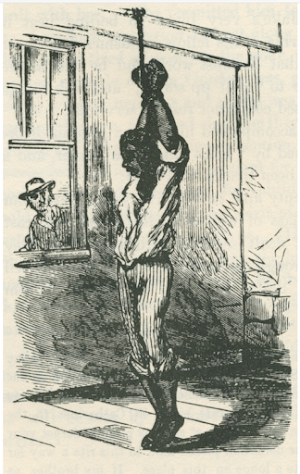A New York Lady in SC 1859

A slave whipping I am going to let the transcripts of several articles from the Edgefield, SC, Advertiser of March 23, 1859 speak for themselves. I have added a few notes in red to clarify terms or allusions to current events, modern readers would not understand. There is not much a decent or sane person can add otherwise, so I won't. Edgefield SC—letter from a Northern lady of Oswego, NY Re-Printed in the Edgefield, S.C. Advertiser, March 23, 1859 From the Oswego Times in New York State. The following is an extract from a private letter, by a New York lady to her brother. She is spending the winter with an invalid daughter in South Carolina: AIKEN, S. C., Feb. 2d, 1859. My DEAR BROTHER:-We are in what is called the Pine Woods District, 120 miles west of Charleston. Aiken is a small town of not more than 1000 inhabitants, and the dullest place I was ever in. All the work that is done in this country is done by the slaves, and they do just



